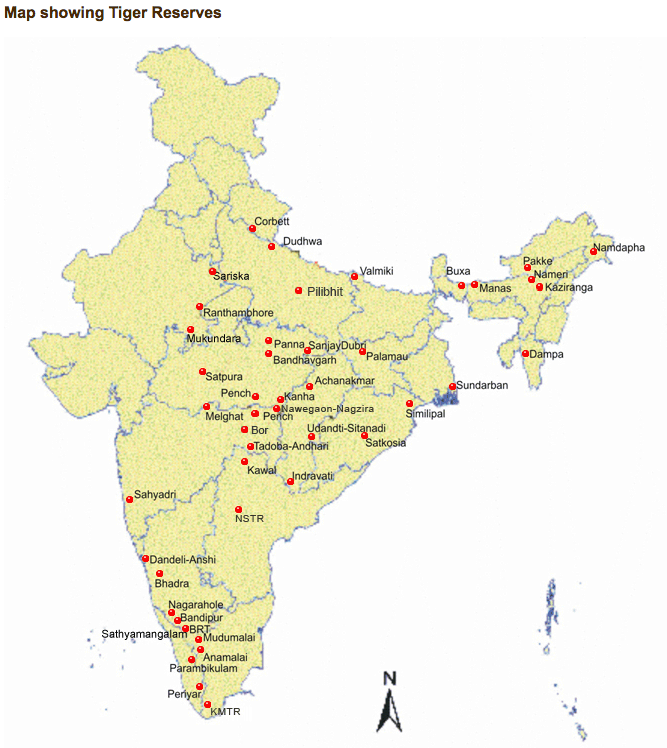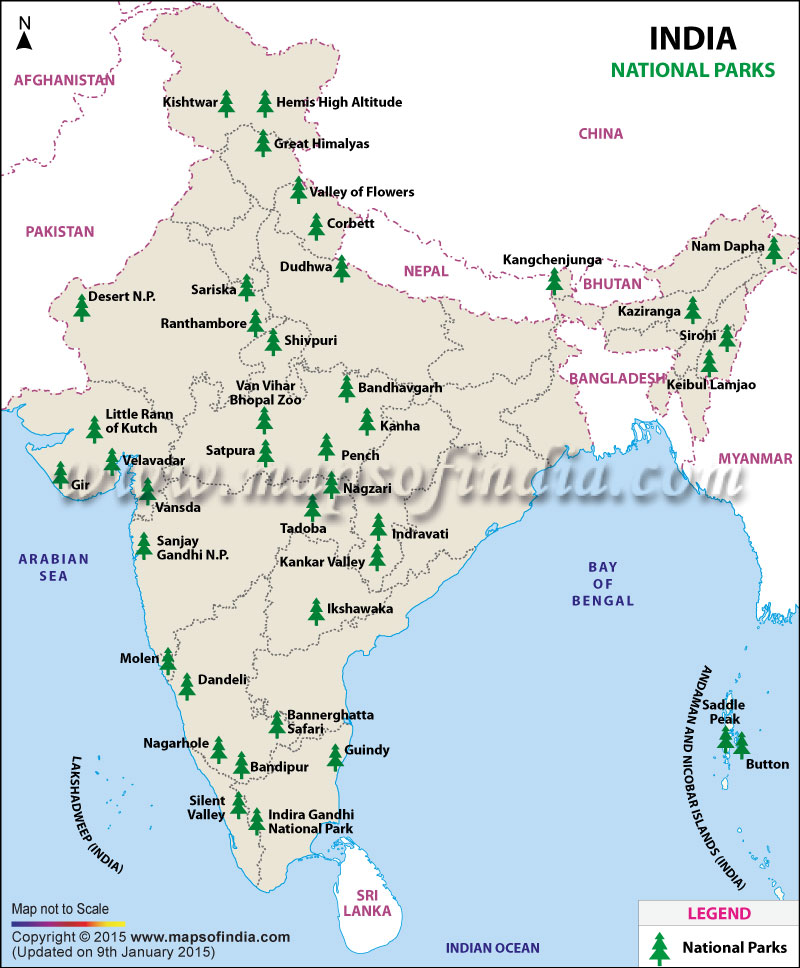This Page lists important section & knowledge resources w.r.t India Environment.
Wetlands in India:
Indian topography and climatic regimes help support and sustain diverse and unique wetland habitats.
Natural wetlands in India constitutes the high altitude Himalayan lakes, wetlands in the flood plains of the major river systems, saline and temporary wetlands, coastal wetlands (lagoons, backwaters and estuaries), mangrove swamps, coral reefs, marine wetlands etc.
Read More: Wetlands in India
- What are Wetlands?
- “Lands transitional between terrestrial and aquatic eco-systems where the water table is usually at or near the surface or the land is covered by shallow water”.
- What is Ramsar Convention?
- The Convention on Wetlands, signed in Ramsar, Iran, in 1971, is an intergovernmental treaty which provides the framework for national action and international cooperation for the conservation and wise use of wetlands and their resources.
- As of December 2020, India 42 Sites under Ramsar Convention.
- Montreux Record
- Montreux Record is a register of wetland sites on the List of Wetlands of International Importance where changes in ecological character have occurred, are occurring, or are likely to occur as a result of technological developments, pollution or other human interference. It is maintained as part of the Ramsar List.
- Presently, Keoladeao NP (Rajasthan) & Loktak lake (Manipur) are part of Montreux Record Sites from India.
- World Wetland Day: 2nd Feb
India- Important Organizations working in Environment field:
- Zoological Survey of India (ZSI)
- Head Quarter: Kolkata
- Comes under MOEFCC (ministry of environment, forest and climate change)
- Deals with Animal taxonomy, publishes Red Data Book on Indian Animals.
- Botanical Survey of India:
- HQ: Kolkata
- Plants kingdom taken care by Botanical Survey of India
- Comes under MOEFCC
- Forest Survey of India:
- HQ: Dehradun
- Comes under MOEFCC
- Mandate is to conduct survey and assessment of forest resources in the country
- Brings out state of forest report. (Latest 2015)
- National Tiger Conservation Authority
- Established December 2015, under Wildlife Protection Act of 1972
- Hence, statutory body under MOEFCC
- Establishes normative standards, guidelines for tiger conservation in the Tiger Reserves, apart from National Parks and Sanctuaries.
- Prepares an Annual Report, which is laid in the Parliament along with the Audit Report.
- Responsible for Project Tiger.
- Wildlife Institute of India (WII)
- Autonomous Institute under MOEFCC
- HQ: Chandrabani, Dehradun
- Carries out wildlife research in areas of study like Biodiversity, Endangered Species, Wildlife Policy, Wildlife Management, Eco-development, Habitat Ecology and Climate Change.
- National Green Tribunal
- Independent Organization, established in 2010 under National Green Tribunal Act.
- Draws inspiration from Article 21 of Indian Constitution
- Chairman: Justice Swatanter Kumar
- Principal Bench: New Delhi with circuit benches at Chennai, Bhopal, Pune and Kolkata
ACTS:
- The Water (Prevention and Control of Pollution) Act, 1974;
- The Water (Prevention and Control of Pollution) Cess Act, 1977;
- The Forest (Conservation) Act, 1980;
- The Air (Prevention and Control of Pollution) Act, 1981;
- The Environment (Protection) Act, 1986;
- The Public Liability Insurance Act, 1991;
- The Biological Diversity Act, 2002.
India: Forest Cover Snapshot
- Total Area: 32,87,263 Sq. KM
- Forest Cover: 21.34% (7,01,673 Sq. Km)
- Tree Cover: 2.82% (92,572 Sq. Km)
- Hence, Forest Cover+ Tree Cover = 24.16 %
- Note: All lands more than 1 hectare in area and with a Canopy density of more than 10% are called Forest Cover and if less than 1 hectare called as Tree cover.
Division of Forest Cover:
- Terms:
- The degraded forest, which have a Canopy density of less than 10% are called Scrubs.
- The Lands with Canopy density of 10-40% are called Open Forests.
- The Land with forest cover having a canopy density of 40-70% are called the Moderately Dense Forest (MDF)
- The Lands with forest cover having a canopy density of 70% and more are called Very Dense Forests (VDF).
Division of Forest on basis of Administration:
- Reserved Forest: 53%
- Reserved forests are under the direct supervision of the government and no public entry is allowed for collection of timber or grazing of cattle.

- Reserved forests are under the direct supervision of the government and no public entry is allowed for collection of timber or grazing of cattle.
- Protected Forest – 29%
- Protected Forest are looked after by the government, but the local people are allowed to collect fuel-wood/timber and graze their cattle
- Unclassified Forest – 18%
- Those Forest in which there is no restriction on the cutting of trees and grazing of cattle.
Division of Natural vegetation in India:

State of Forest Report 2015:
- Area Wise Largest Forest Cover
- Madhya Pradesh
- Arunachal Pradesh
- Chattisgarh
- Maharashtra
- Odisha
- Percentage Wise Largest forest Cover
- Mizoram (88.93%)
- Lakshadweep (84.56%)
- A&N islands
- Arunachal Pradesh
- Nagaland
- Forest Cover Variation with Altitude(Height):
- Mangrove Forest
- West Bengal
- Gujarat
- Andaman & Nicobar Island
- Andhra Pradesh
- Odisha
NATIONAL TIGER RESERVES:
- Tiger reserves are administered under Project Tiger, governed by National Tiger Conservation Authority (NTCA).
- In addition to existing reserves, in-principle approval has been accorded by the NTCA for the creation of four new tiger reserves, in sites at: Ratapani Tiger Reserve (Madhya Pradesh), Guru Ghasidas (Chhattisgarh) and Sunabeda Tiger Reserve (Odisha).
- Project Tiger – started in 1973.

NATIONAL PARKS OF INDIA:

India Environment: BIOSPHERE RESERVES of INDIA:
- Indian government has established 18 Biosphere Reserves in India
- 10 of the 18 are part of UNESCO’s Man and Biosphere Program
- MAB initiated in 1971
| 1 | Nilgiri Biosphere Reserve | Tamil Nadu,ÊKerala,ÊKarnataka |
| 2 | Gulf of Mannar Biosphere Reserve | Tamil Nadu |
| 3 | Sundarbans Biosphere Reserve | West Bengal |
| 4 | Nanda Devi Biosphere Reserve | Uttarakhand |
| 5 | Nokrek Biosphere Reserve | Meghalaya |
| 6 | Pachmarhi Biosphere Reserve | Madhya Pradesh |
| 7 | Simlipal Biosphere Reserve | Odisha |
| 8 | Achanakmar-Amarkantak Biosphere Reserve | Chhattisgarh,ÊMadhya Pradesh |
| 9 | Great Nicobar | Andaman and Nicobar Islands |
| 10 | Agasthyamala Biosphere Reserve | KeralaÊandÊTamil Nadu |

Natural Heritage Sites:
- UNESCO also declares World Heritage Sites – in two categories – Culture & Natural
- Cultural Heritage Site include:
- Kaziranga National Park – Assam
- Manas Wildlife Sanctuary – Assam
- Keoladeo National Park – Rajasthan
- Sunderbans National Park – West Bengal
- Nanda Devi & Valley of Flowers – Uttarakhand
- Western Ghats – 39 Sites – 20 of Kerala, 10 in Karnataka, 5 in Tamil Nadu and 4 in Maharashtra
- Great Himalayan National Park – Himachal Pradesh
- Khangchendzonga National Park -2016 Addition – Sikkim
BIODIVERSITY HOTSPOTS in INDIA:
- What are Bio-diversity hotspots?
- British biologist Norman Myers coined the term “biodiversity hotspot” in 1988.
- Conservation International (CI) adopted it.
- Hot spots are the richest and most threatened reservoirs of plant and animal life of the earth. They have maximum number of endemic species ( Original Species belonging to that ecosystem).
- What are criteria for qualification to world biodiversity hotspot?
- There are two Criteria’s:
- Species endemism: the region must contain at least 1,500 species of vascular plants (> 0.5% of the world’s total) as endemics, and

- Degree of threat: the region has to have lost at least 70% of its original habitat.
- Species endemism: the region must contain at least 1,500 species of vascular plants (> 0.5% of the world’s total) as endemics, and
- Bio-diversity hotspots in India:
- India has part of 4 Major.
- Himalaya
- Indo-Burma
- Western Ghats & Srilanka
- Nicobar
India Environment | India Environment
